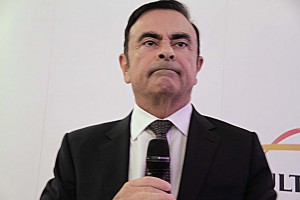
Nissan-Renault's Carlos Ghosn expects the growth of auto sales in Europe to continue to slowly increase for some time.
European automakers have another reason to celebrate today, an industry group confirming that sales on the Continent rose in February, the 18th consecutive month of increased demand.
There is now general consensus that the European auto market’s worst recession since World War II has ended. But there’s far less agreement over the form the recovery will take.
Expect to see “slow growth … for a long time, 2 to 3% a year,” forecast Carlos Ghosn, CEO of the Renault-Nisan Alliance, during an appearance at the Geneva Motor Show earlier this month.
That was echoed by Sergio Marchionne, chief executive of Fiat Chrysler, who said of the recovery, “I think it’s sustainable. But I don’t think it’s phenomenal.”
The European carmaking group ACEA today announced that February sales rose 7.3%, to 924,440 vehicles. That was the biggest increase since March of 2014, when demand jumped 10.4%, signaling to many observers that the worst of the downturn was over.
ACEA is nonetheless taking a cautious position, projecting that new vehicle registrations will rise a modest 2% for all of 2015, to around 13 million. That’s far short of the pre-crisis peak for the region in which the industry group includes 28 EU nations as well as Switzerland, Norway and Iceland.
That cautious forecast is echoed in a new analysis by research firm IHS Automotive. Forecasting an overall 2.2% jump this year, it stated that, “We also do not expect the market to return to earlier levels at least by the end of the decade.”
The February numbers saw modest gains in the two European powerhouse markets, Germany and France, as well as a 12% jump in the U.K. But it also found double-digit gains in two countries especially hard-hit by the recession. Registrations in Spain increased 26% last month, while they were up 13% in Italy.
There is growing hope that the industry will be able to lure consumers back to showrooms with a flood of new products coming to market in the months ahead. Attendance was reportedly strong at the annual Geneva Motor Show, which wrapped up this past weekend after showcasing the debut of more than 50 new vehicles. Those ranged from the Nissan Sway, a concept version of its next-generation Micra minicar, up to the 1,500-horsepower Koenigsegg Regara ultracar.
(Mustang gallops off to good start overseas. For more, Click Here.)
Those new products are hitting market at a time when potential buyers seem more willing to write checks. Surveys found that economic confidence rose to a seven-month high in markets using the Euro last month. Declining oil prices and the likelihood of new stimulus measures by the European Central Bank are thought to have played a factor.
On the other hand, Ghosn and other automotive executives have been warning of potential headwinds, including the ongoing crisis in Russia that has led to a virtual collapse of that country’s previously robust car market.
(Click Here for details about Volkswagen’s expectations for 2015.)
Europe’s largest automaker also led in terms of sales growth last month, the various Volkswagen AG brands collectively posting an 11% sales increase – helping VWAG boost its share of the recovering European market to 25%.
Key luxury makers, including BMW and Daimler also posted double-digit gains. On the mainstream side, Fiat Chrysler also was up 11% – but that was largely due to the rapid expansion of the Jeep brand, which has scored a solid hit with the launch of its new mini-ute, the Renegade.
(To see how Ford is dealing with the “squeeze” in Europe, Click Here.)
How General Motors performed was a classic optimist’s dilemma. On the glass half-full side, demand for its Opel and Vauxhall products rose 6% in February, but the Detroit-based maker fell into negative territory overall, sales dipping 8.3% because of its decision last year to pull Chevrolet out of Europe.
“At the end of the day, Europe is coming back on track. That’s a positive,” wrote IHS analyst Carlos da Silva, but even by decade’s end, he concluded, annual registrations will be “standing at around 1 million units below” Europe’s prior peak of 15.2 million.
